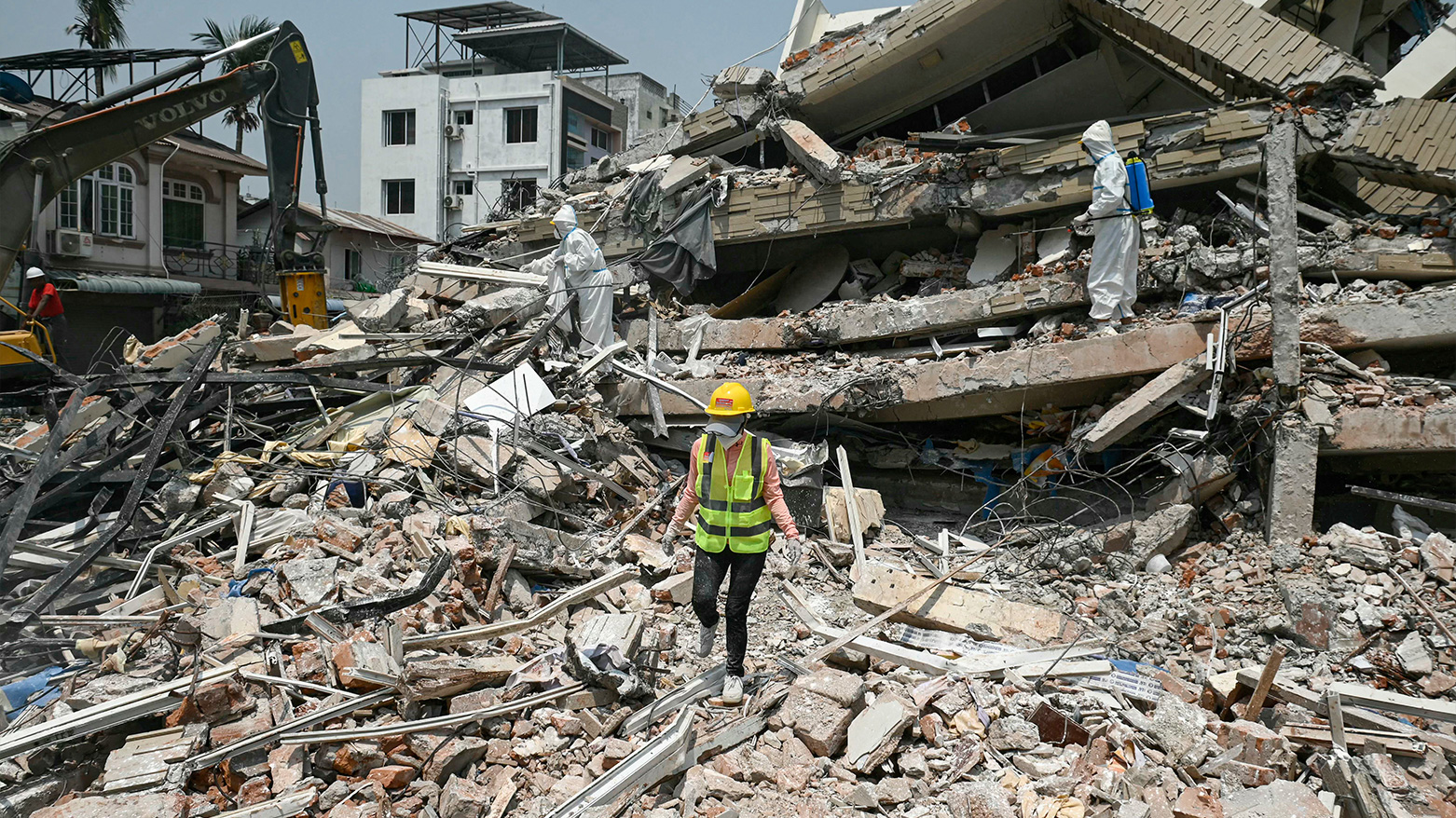Buried in Rubble: 3,354 Dead in Myanmar Quake
The epicenter of the quake, which violently shook the central region of the country, triggered landslides, flattened thousands of buildings, and left tens of thousands of people homeless.

By Kamaran Aziz
ERBIL (Kurdistan24) – A humanitarian catastrophe is unfolding in Myanmar as the death toll from last week’s powerful earthquake continues to climb. According to state media and international outlets, as reported by Deutsche Welle (DW), at least 3,354 people have been confirmed dead, and 4,850 others injured in the wake of the 7.7-magnitude earthquake that struck central Myanmar on March 28.
Authorities and emergency services fear the worst may be far from over. With 220 individuals still officially unaccounted for and reports of widespread devastation in remote areas, relief organizations on the ground warn that the actual number of missing persons could be significantly higher. Entire communities remain cut off by collapsed infrastructure, hampering rescue and relief efforts nearly a week after the seismic disaster.
The epicenter of the quake, which violently shook the central region of the country, triggered landslides, flattened thousands of buildings, and left tens of thousands of people homeless. The tremors reverberated across the region, causing panic and damage in at least five neighboring countries. Thailand, in particular, reported multiple casualties and infrastructure damage as a result of the quake’s powerful aftershocks.
According to the report by DW, UN aid chief Tom Fletcher arrived in Mandalay, near the earthquake’s epicenter, on Saturday. Praising the work of humanitarian and community organizations, Fletcher posted on X, "The UN is here to help – the world must rally behind the people of Myanmar."
However, serious concerns have arisen about the accessibility of aid. The UN Office of the High Commissioner for Human Rights said on Friday that Myanmar’s military junta has been restricting aid to regions opposed to its rule, raising fears that political interference could worsen the crisis.
Despite these challenges, rescue missions from China, Russia, India, and other Asian and Western nations have mobilized to support Myanmar’s recovery. The United States, often at the forefront of such humanitarian efforts, belatedly dispatched a relief team on Friday.
Adding a layer of political tension to the disaster, Myanmar’s junta leader, Senior General Min Aung Hlaing, returned on Saturday from a summit in Bangkok. There, he met with leaders from India, Thailand, Nepal, Bhutan, and Sri Lanka. Since orchestrating a coup in 2021 that overthrew Myanmar’s elected government, the military regime has been largely isolated by the international community. Min Aung Hlaing is currently under multiple global sanctions and is being pursued by the International Criminal Court (ICC) for alleged crimes against humanity targeting the Rohingya Muslim population.
In a move that stunned observers, the junta announced a temporary ceasefire on Wednesday, following the earthquake’s devastation. The ceasefire, which will last until April 22, was declared after rebel groups voluntarily halted their offensives to enable aid distribution. Despite the pause in military operations, many remain skeptical about the junta's intentions, especially in light of Min Aung Hlaing’s promise to Indian Prime Minister Narendra Modi that "free and fair elections" will be held in December—an assurance that has been met with widespread doubt.
Humanitarian agencies have mobilized to deliver urgent aid, including food, water, medical supplies, and temporary shelter to the hardest-hit areas. However, ongoing aftershocks and logistical challenges continue to slow progress, raising concerns over the well-being of survivors trapped under rubble or living without access to clean water and medical care.
This earthquake is now among the deadliest natural disasters to hit Myanmar in recent memory, recalling the devastation of Cyclone Nargis in 2008. Local officials have appealed for international assistance as hospitals overflow with the injured and mass graves are prepared in some regions due to the overwhelming death toll.
As Myanmar grapples with the scale of this tragedy, regional governments and international relief agencies are under mounting pressure to step up support and ensure that remote communities are not left behind. The coming days will be critical in the race to find survivors and prevent further loss of life in the face of one of Southeast Asia’s gravest humanitarian crises in recent years.
